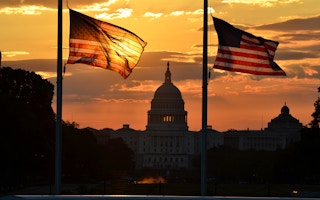In the rarified atmosphere of Aspen, Colorado, last week I attended the 11th American Renewable Energy Day Summit. Over the years, the event has grown into a fascinating brainstorming and networking event bringing US domestic and international figures in the renewable energy business together – financiers, technology entrepreneurs, government officials, activists, and scientists from across the energy challenges and opportunities.
We talked about international climate negotiations and renewable energy progress in China and India, but the strongest focus was on the challenges and great potential for US innovation and how to bring climate change and energy policy back from partisanship.
Around the room, there was a strong belief that a radical middle is ready to emerge in this country. Most people in the room – from both liberal and conservative perspectives – seemed to believe that the threats climate change poses to the economic, financial, social and environmental health of nations are powerful reasons for leaders from all political affiliations to find common ground. As the private equity guys noted, what could be more unpatriotic in the United States than betting against the US ability to innovate? It has been the hallmark of American success for centuries and has to be what the US bets on now as climate change creates uncertainty across the economy.
I was also struck by a sense of a movement taking shape as religious leaders talked of the denominational decisions to divest from coal and in some cases fossil fuel assets. It sounded uncannily, in both tone and tactic, like the reaction to Apartheid. Something profound is going on.
Former US President Jimmy Carter also joined the discussion. It’s been almost 40 years since his administration controversially focused on energy efficiency in the teeth of an oil crisis as one way to energy independence. He was mocked then for his appearance on television in a cardigan and for urging the nation to turn down the heat and bundle up. In the intervening years, strides in energy efficiency in the US, while important, have been dwarfed by those in Europe and Japan.
“
Most people in the room – from both liberal and conservative perspectives – seemed to believe that the threats climate change poses to the economic, financial, social and environmental health of nations are powerful reasons for leaders from all political affiliations to find common ground.
Asked if he would have done anything differently on these issues, knowing what he knows now, Carter noted that despite the proud tradition of the private sector leading in the US, we seem to falter in our belief that if we set stretch goals and targets in legislation or regulation, the US private sector can respond. Low-balling our ambitions has taken us to the edge of a precipice 40 years later.
With this sense of bipartisan hope, the responsibility of the US internationally came to the fore. As Hillary Clinton has said, the US is a necessary nation. International agreements can be forged and progress made, but without the US fully engaged, the breakthroughs are rarer and of diminished consequence. The former US negotiator Dan Reifsnyder has, in retirement from that role, written a dissertation on exactly this point, interviewing all the US climate negotiators going back over the history of climate talks. I cannot wait to gather their perspectives.
As the US and China buckle down to serious talks, even if premised on mutually agreed construction and not on internationally agreed and legally binding targets and timetables, we have for the first time in many years the two necessary nations at the table and working hard.
At the United Nations secretary-general’s summit for climate leadership on September 23, US action will be on display. From Governor Jerry Brown of California to the states of the Pacific Northwest and those of the U.S. Northeast, to mayors across the country, leaders will be calling for a price on carbon, setting performance standards, instructing public pension funds on investment strategies and responding to calls for divestment spreading across college campuses. On the Sunday before the summit, in the streets of New York, a climate march is taking shape. The expectation is that this may be the largest march of its kind. The message will be remarkably similar to those inside the halls of the UN building: act. Act now. Get the fundamentals right, price carbon, send clear signals for the private sector and finance to follow, and help the most vulnerable.
That there is a bright green future ahead was not in doubt at the Aspen summit.
Solar, wind, geothermal and natural gas resources in abundance give the United States choices many would envy. But the struggle to make that shift, and that’s how it was characterized, will define this generation. The movement is growing – from all sides.
Rachel Kyte is World Bank Group vice president and special envoy for climate change. This post originally appeared on the World Economic Forum blog.











